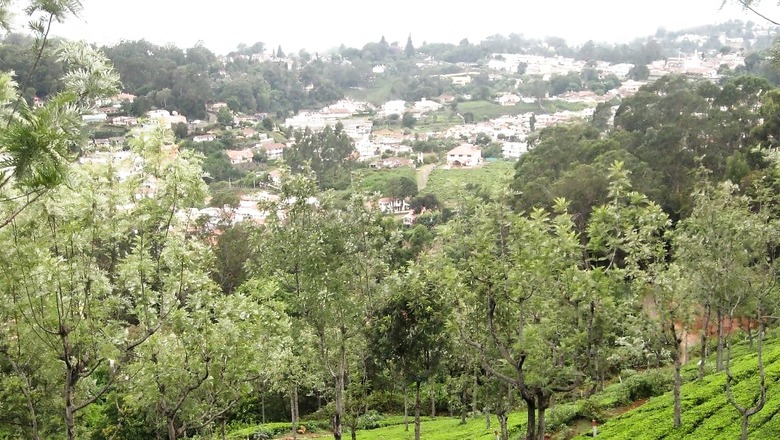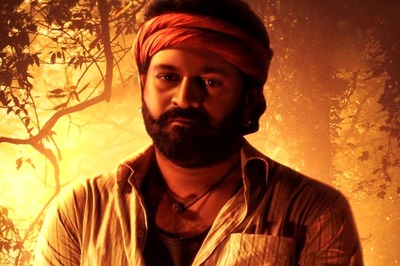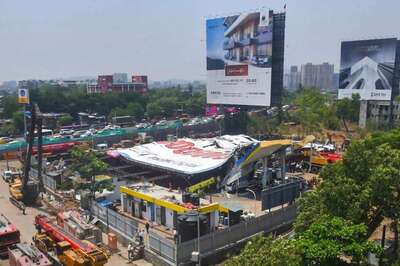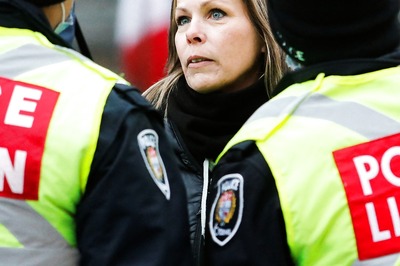
views
It could well be a highly contested battle in the scenic Nilgiris, which will go to polls in the first phase of the Lok Sabha elections on April 19. Sitting MP and DMK candidate A Raja will be up against union minister and BJP candidate L Murugan, amid allegations of favouritism towards the former telecom minister by the electoral officer in the Lok Sabha constituency.
This constituency, which is reserved for the scheduled castes, may witness a four-cornered contest this time with Raja, Murugan, AIADMK’s Lokesh Tamilselvan and Naam Tamilar Katchi’s A Jayakumar.
Raja wrested the seat back in 2019 and defeated AIADMK candidate M Thiyagarajan by a margin of more than 2,00,000 votes. He had won the seat in 2009 but failed to retain it in 2014.
The Lok Sabha seat also has 25 lakh Sri Lankan repatriates, called Indian-origin hill country Tamils, who constitute the single biggest demographic that could determine victory.
Nilgiris is the 19th Lok Sabha constituency in Tamil Nadu out of 39 seats. Since 2009, this constituency has been reserved for candidates belonging to the SC. It is composed of the following assembly segments: Bhavanisagar (AIADMK), Udhagamandalam (Congress), Gudalur (AIADMK), Coonoor (DMK), Mettupalayam (AIADMK) and Avinashi (AIADMK).
Here are some key issues of the Nilgiris constituency:
- Human-animal conflict: With Nilgiris forming the link between the Western Ghats and Eastern Ghats, the elephant migration corridors become ecologically important. This also sets the stage for increased man-animal conflict, with as close to 15,000 elephants undertaking to-and-fro journeys between the ghats each year. People complain that no concrete measures have been taken to address the issue, adding that poor waste management by authorities only exacerbates the menace. The government claims to have removed all encroachment and illegal resorts along the elephant corridor in the Mudumalai Tiger Reserve. Elephants are monitored constantly using radio collar technology and steps are also being taken to ensure that the corridors are not disturbed. The problem, however, still persists.
- Civic infrastructure: There are complaints about the poor state of civic infrastructure, including water treatment and sewage facilities in the Nilgiris. Pollution in water bodies is also a major concern. In fact, in 2016, a water quality evaluation conducted by the Tamil Nadu Water Supply and Drainage Board revealed findings regarding potable water sourced from the Bhavani river and distributed to around 1,50,000 residents in Mettupalayam. The assessment showed elevated levels of faecal coliform, signalling contamination from human and animal waste. Tribal residents, who were to benefit from a drinking water scheme over two years ago, are now demanding that the forest department complete the project.
- Unchecked tourism: The tourism industry has led to a significant surge in visitors to the Nilgiris, with approximately 1.2 million arriving annually from across India to destinations like Ooty and Coonoor. These areas are now filled with low-budget accommodation, which have become increasingly congested and resemble slum-like conditions. Additionally, tourists frequently leave behind solid waste, exacerbating environmental concerns. Wildlife areas are bearing the brunt, manifested by activities like the cutting of firewood for bonfires and the organisation of night safaris. Local residents are not happy about the tourism surge hurting the pristine and ecological value of their hometowns. Recently, pushed by the Madras High Court, the Nilgiris collector decided to enforce certain restrictions, like capping the number of vehicles allowed to ply on the roads every day with a special focus on reducing the number of tourists in Ooty and Coonoor.
- Economic woes: There appears to be resentment against the introduction of GST and its resultant impact it has had on MSMEs in the Nilgiris, as per ground reports. With the Congress batting for a single-rate GST regime for all goods and services, and the DMK fiddling with the idea of abolishing GST as a whole, the BJP could face heat over this issue. There are also job-related concerns among voters, who highlight the lack of adequate employment outside the hospitality industry in the hilly region.
DMK has the lead
The DMK is comfortably placed across Tamil Nadu even as the BJP tries to grab a significant vote share, which may not necessarily translate into votes. This is, however, one of the seats where the regional party faces stiff competition from the BJP.
Raja, who claimed victory in both 2009 and 2019, has been steadily garnering support in the district since moving here when his original constituency, Perambalur, lost its reserved status following delimitation. Although he faced defeat in 2014 amid the controversy around the 2G spectrum case, he was later cleared of charges.
He has since actively engaged with plantation and construction workers, as well as the Badagas community that is the predominant ethno-linguistic community in the Nilgiris. Nevertheless, his frequent criticism of Sanatan Dharma and the Hindutva brigade has caused a decline in his support base, particularly among the Badagas.
The 2G controversy refuses to go away, as L Murugan has been calling the poll battle in the Nilgiris a fight between “2G and Modiji”. Recently, an appeal to review the acquittal in the 2G scam was accepted by Delhi High Court that dealt a blow to Raja.
The AIADMK has also been taking potshots at Raja, with the party’s general secretary Edappadi K Palaniswami claiming that Raja could soon be in jail.
Raja, however, has been praised for his handling of the catastrophic landslides in 2009, as well as for helping bring in investment and developmental projects aimed at benefiting the residents of the Nilgiris. But, there is some frustration among voters over lack of initiative in dealing with the man-animal conflict in the constituency.
Is the BJP on the rise?
The Nilgiris, unlike other constituencies of Tamil Nadu, is not particularly unfamiliar territory for the BJP. Master Mathan of the BJP won twice from this seat in 1998 and 1999. But, those victories were mostly ensured during an alliance with the AIADMK or DMK.
This time, however, the BJP is alone and fighting both the DMK and AIADMK on the seat. Ground inputs have suggested that the BJP is putting up a tough fight. If it does not win the seat, it stands a high chance of displacing the AIADMK from the second position.
Murugan has steadily cultivated a robust support network in the area in recent years, and has been actively campaigning, stressing the accomplishments of the Prime Minister Narendra Modi-led central government. He is a vocal critic of Raja for his “anti-Hindu rhetoric” and has pledged to foster development and generate employment opportunities in the environmentally sensitive region.
The BJP could be poised to spring a surprise in the Nilgiris, given how the Badagas are gradually tilting towards the saffron party. The community makes up about 40 per cent of the population of the Nilgiris and, apart from them, the party is also eyeing the votes of at least 7,000 families living on the fringes of the forest area, who have no electricity supply. The BJP has promised them power connections if it wins.
Inputs from the ground, however, do not paint a completely rosy picture for the BJP. The saffron party is strong only in two out of the six assembly segments in this constituency. But, compared to 2019, it is indeed in a stronger position.
The AIADMK factor
The BJP’s former ally in the state, the AIADMK has fielded Lokesh Tamilselvan. But, he is relatively unknown in the Nilgiris. He had previously served in the AIADMK’s IT wing.
In 2019, the AIADMK secured at least 34 per cent of the vote in Nilgiris. This is the vote that the BJP appears to be targeting now, making the AIADMK an easier opponent to take down than the DMK.
Tamilselvan is expected to split the Dravidian votes, riding on the familiarity of the AIADMK’s “two leaves” symbol. A Jayakumar, a candidate of the Naam Tamilar Katchi, could also end up doing the same. Due to this multi-cornered fight, the DMK’s core voter base could split and this could end up benefiting the BJP.
Voter Demographic
Total Voters: 13,65,608
Urban Voters: 6,58,223 (48.2%)
Rural Voters: 7,07,385 (51.8%)
SC Voters: 3,34,574 (24.5%)
ST Voters: 43,699 (3.2%)
Muslims: 7.75%
Hindus: 90%
Christians: 7.56%


















Comments
0 comment